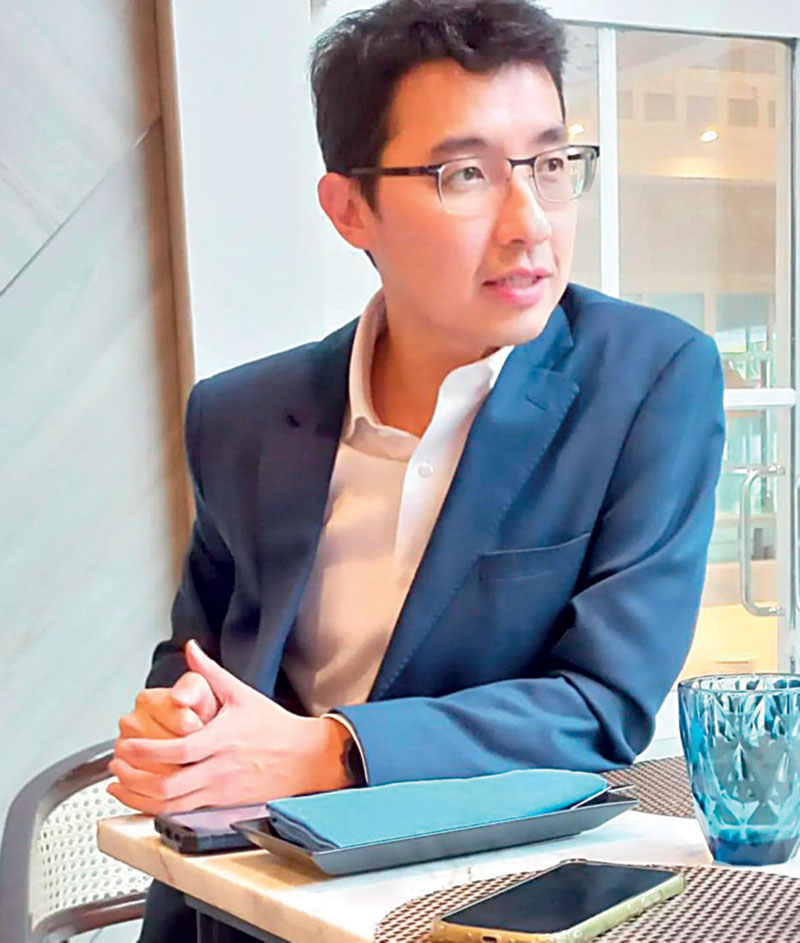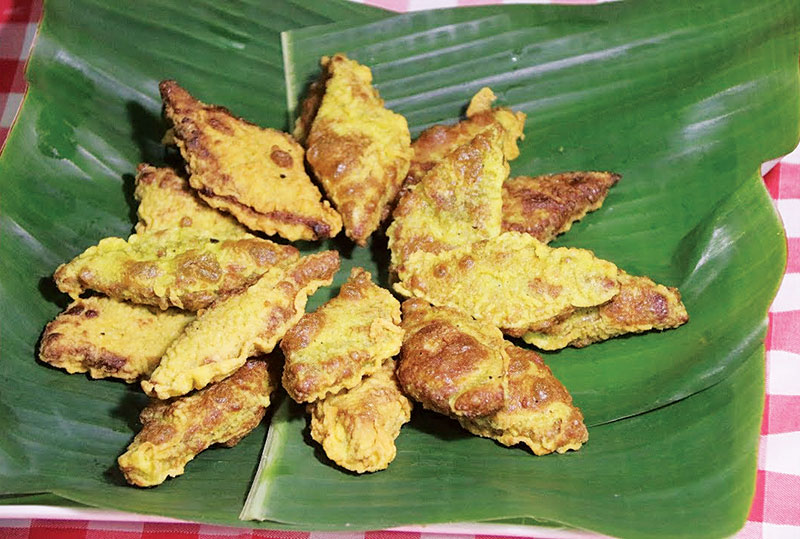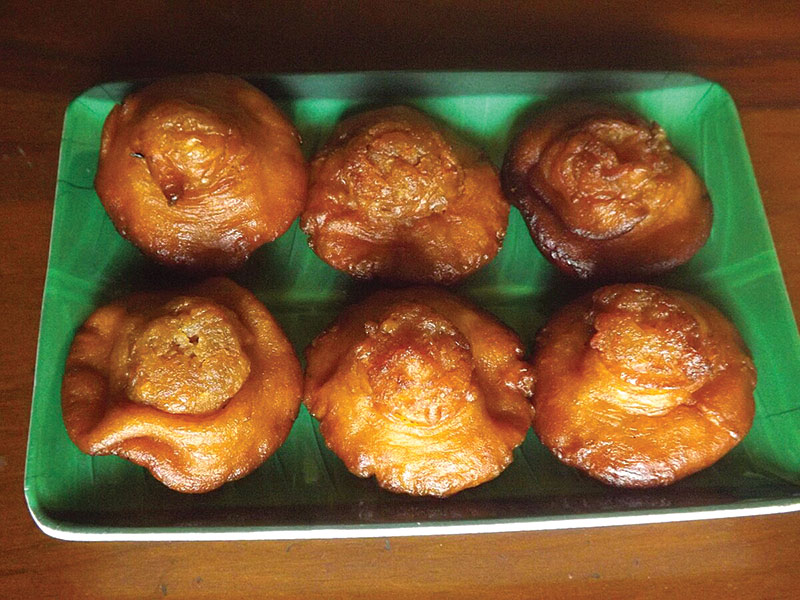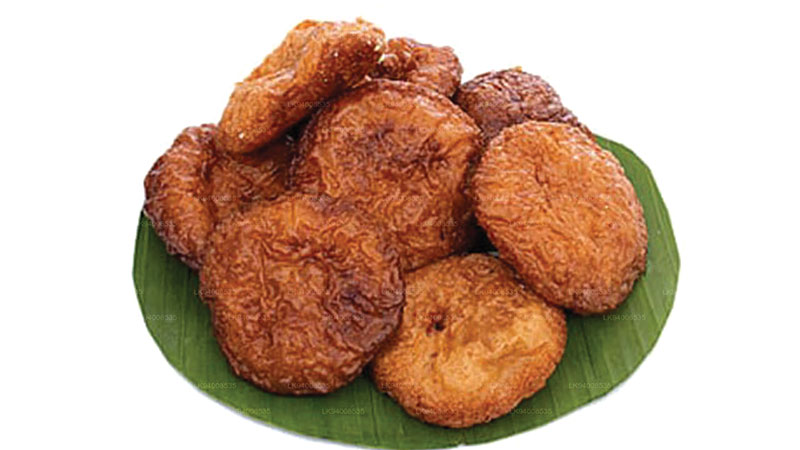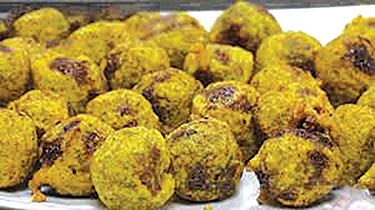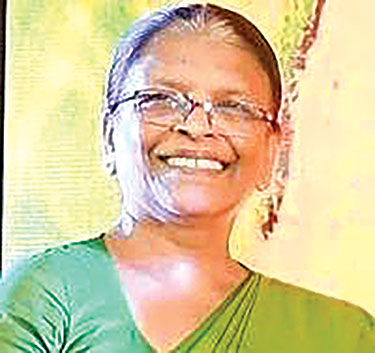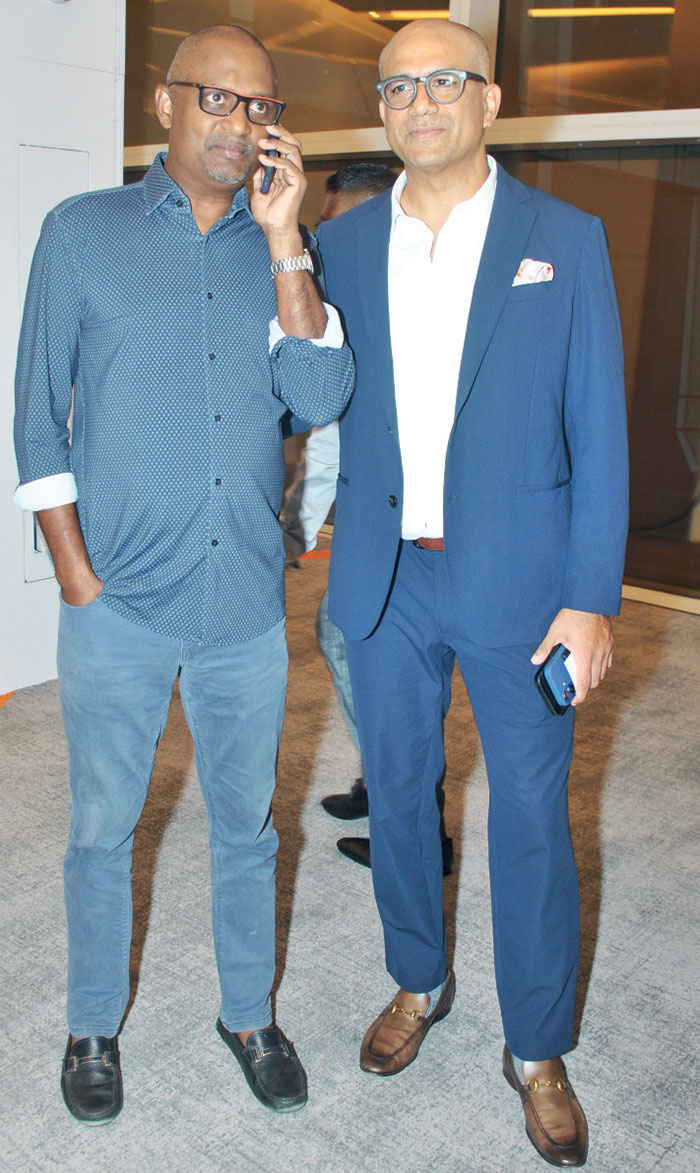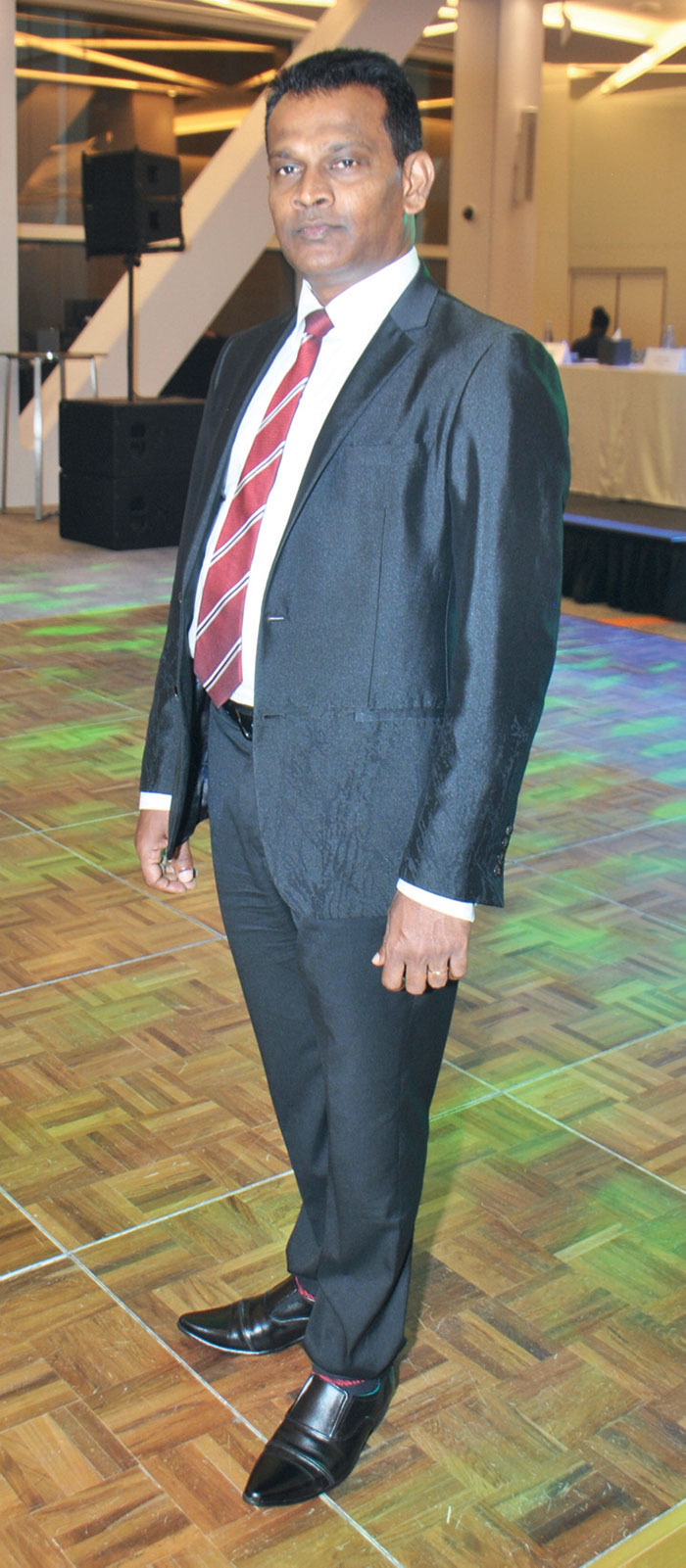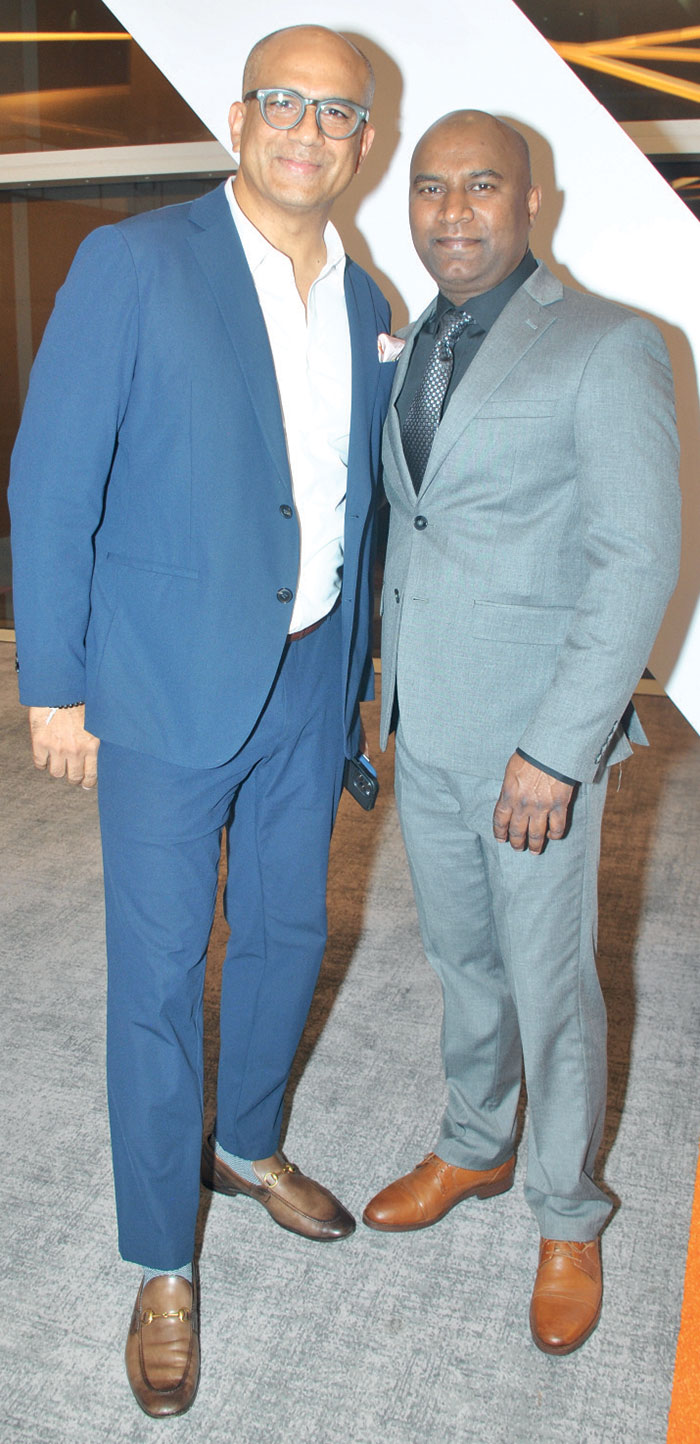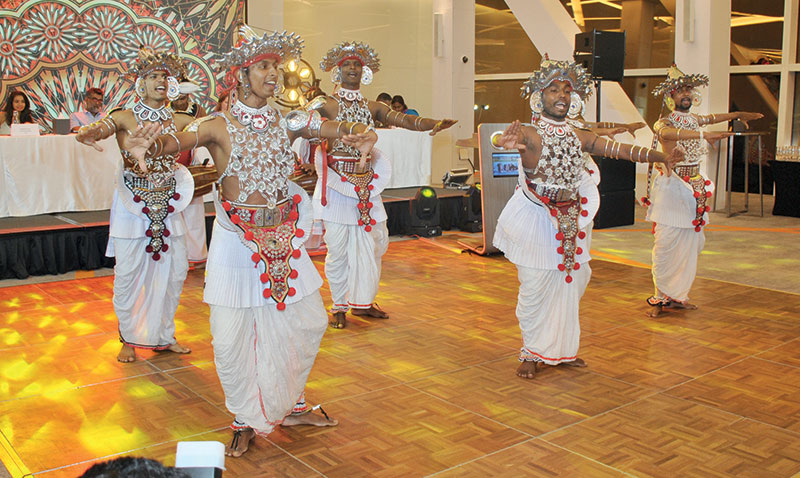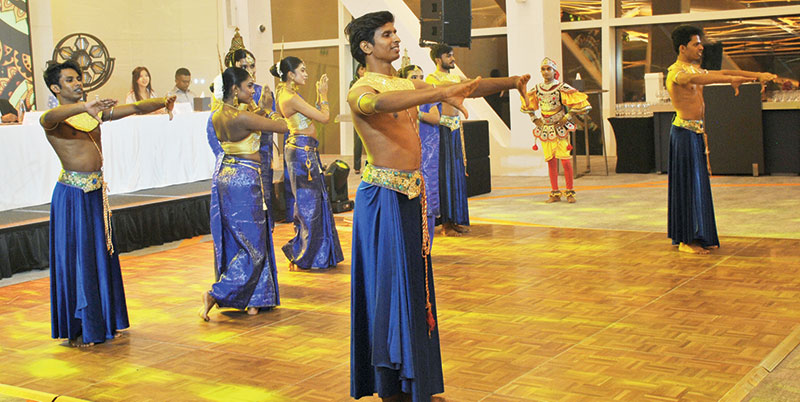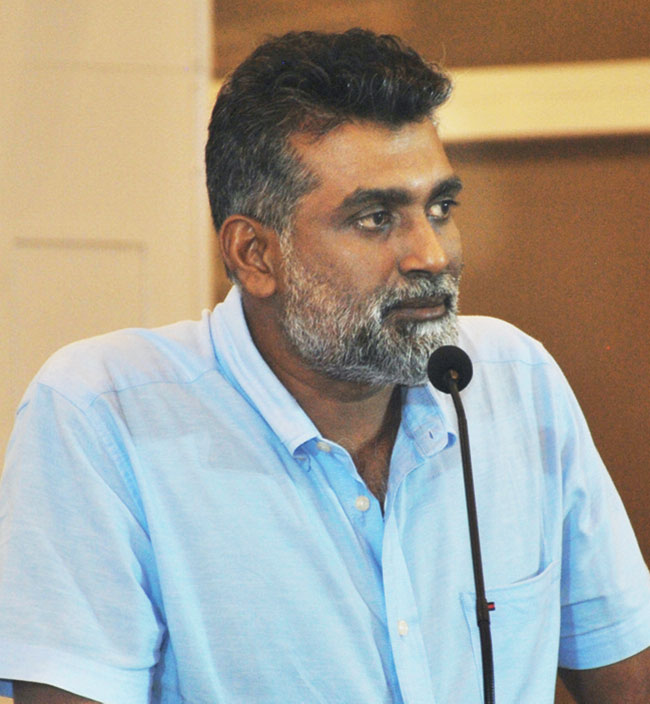Life style
Advanced treatment and management strategies for heart failure
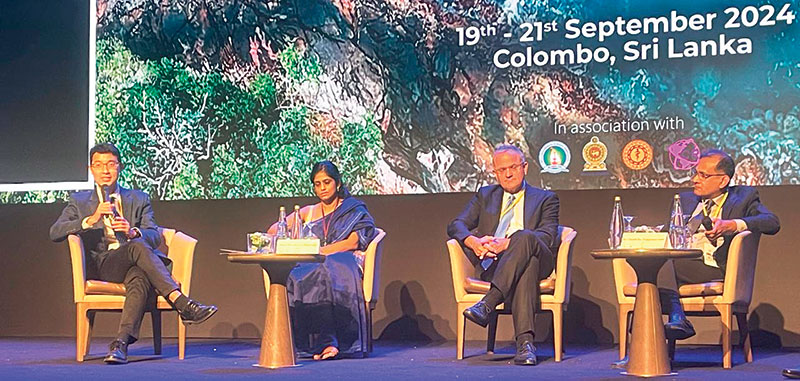
 There has been a perceptible rise in cardio vascular disease in South East Asia, said Dr. Lim Choon Pin, a distinguished cardiologist practising at Mount Elizabeth hospital Singapore who visited Sri Lanka recently to participate in the Annual Sessions of the College of Physicians at Shangri-la Hotel Colombo. He specialises in advanced heart failure, heart transplantation and mechinical circulatory device.
There has been a perceptible rise in cardio vascular disease in South East Asia, said Dr. Lim Choon Pin, a distinguished cardiologist practising at Mount Elizabeth hospital Singapore who visited Sri Lanka recently to participate in the Annual Sessions of the College of Physicians at Shangri-la Hotel Colombo. He specialises in advanced heart failure, heart transplantation and mechinical circulatory device.
Dr. Lim was invited as a keynote speaker at the Cardiology Symposium, where he addressed the pressing issue of heart failure Dr. Lim shared his expertise on advanced treatment and management strategies for heart failure, shedding light on the latest research practices.
His visit marked a significant contribution to the exchange of knowledge between Sri Lankan and international medical professionals in the field of Cardiology.
Heart failure is a prevalent cardio vascular condition affecting millions globally. It develops when the heart cannot pump blood efficiently, leading to a spectrum of health complications. The obvious culprits are unhealthy eating habits and lifestyle.
What role does stress play here?
Dr Lim said “We are what we eat”, and our poor diet has led to a rise in conditions like high blood pressure, high cholesterol and diabetes. These are the biggest risk factors for cardiovascular diseases and are often the consequence of an unhealthy lifestyle and diet. Another risk factor is smoking. A smoker has twice the chances of getting a heart attack when compared with a non-smoker. People are also leading a more sedentary lifestyle, which also increases the risk of them developing heart diseases.
Stress plays a major role here since stress can lead to higher blood pressure, higher heart rate. Dr Lim believes that stress does contribute to cardiovascular diseases, although it may be hard to prove this. This is simply because it is difficult to quantify stress and thus determine its impact on our body.
What patients are the most susceptible to heart disease? Does genetics play a major role in determining the health of our heart?
The patients with the risk factors of diabetes, high blood/pressure, high cholesterol as well as the ones who smoke, are the most susceptible to heart disease. determining your cardiovascular health.Genetics, unfortunately also plays a role in determining your cardiovascular health Having a first-degree relative suffering coronary heart disease at a young age predisposes you to also developing it.
Dr Lim Choon maintains prevention is always better than cure. Heart disease, while not 100% preventable, is certainly treatable. We need to start early by being mindful of our lifestyle choices and exercising regularly from a young age. Engaging in moderate forms of exercise for 30 minutes at least five days a week will be enough. We should also go for regular check-ups, to keep track of our blood pressure, cholesterol and sugar levels. It may surprise to know that a heart attack is the number one killer among women One in every deaths is caused by either a heart attack or a stroke says Dr Lim Choon.
A heart attack usually starts slowly with mild pain and discomfort ignoring these signs can be fatal says Dr Choon, if you recognise them when they occur and react quickly. A healthy diet can help you fight against cardio-vascular diseases controlling risk factors such as high cholesterol,diabetes and obesity. . Age,family history, lifestyle habits and physical inactivity can also have a negative impact. According to Dr Lim heart attacks occur when the arteries supplying blood to the heart become hardened and narrow blocking the flow. There are warning signs but it can come on suddenly. There are now minimally invasive treatments for heart problems such as stenting, bypass surgery and heart transplant. A coronary angiogram carried out in hospital will detect any blockages in the arteries said the doctor. One of doctor Lim’s sub speciality is heart transplant . Heart transplant is a high risk surgery and reserved for very sick patients with advanced heart failure he said.
Speaking about Covid-19 and heart disease Dr Lim said patients with pre existing heart diseases are at higher risk of developing a serious heart problem,as thier heart muscle function may already be weak or damaged . Any pre existing blood vessel blockage could also lead to a sudden heart attack triggered by the infection and inflammation.
Talking about heart transplant patients, he said after a heart transplant,a patient can live longer and enjoy a better quality of life. But he pointed that life expectancy for patients after a heart transplant is also variable depending on age and other medical issues, In carefully selected patient, a heart transplant is usually the best treatment for heart failure who are fit enough for the operation said Dr Lim He said heart transplant is a surgery to remove a diseased heart from a patient and replace it with a healthy one from an organ donor. Heart transplant can lengthen and improve overall quality of life
He said heart transplant process can be gruelling on some patients. Heart transplant is also a high-risk surgery and is reserved for very sick patients with advanced heart failure. However, a heart transplant can offer a significantly better quality of life, I would encourage all potential heart transplant patients to look to the past thousands of patients who have successfully gone through the surgery for motivation and inspiration.
The rate of heart transplants in the world has reached a plateau in the past 20 years. This is simply due to the limited supply of healthy donor organs. Due to an aging population, greater number of people getting cardiovascular diseases are very common but dr Lim maintains better survival rates are possible now due to medical and technological advancements.
One of the most established treatment methods for end-stage heart failure these days is the Ventricular Assist Devices (VAD), otherwise commonly known as an artificial heart pump. Ventrcular assist devices VADs can offer a lifeline to people whose hearts are too weak to meet their needs. Dr Lim said these VAD devices are mechanical pumps that takes over the heart pumping station to the rest of the body. Its a treatment for a weakened heart or heart failure. A VAD may be used to help the heart work while waiting for other treatments, such as a heart transplant . After a surgical implant procedure Sometimes a VAD is used to permanently help the heart pump blood. When placed in the left ventricle, its called a left ventricle assist device LVAD, This device provides a constant flow of blood from the heart to to the body.
Dr Lim said these pumps are reccomended for people whose hearts are too weak to meet thier demands. A VAD can bring notable positive change to your life including an increase in survival and an improved quality of life.The VAD is implanted into the heart and its key function is to pump blood out of the heart to the rest of the body. With a VAD patients have an 80% chance of surviving, and after this surgical implant procedure, most people experience notable symptom imorovements and better quality of that lasts for years.
A good quality of life is possible after the successful operation of implanting this pump explains Dr. Lim.
Ventricular assist devices or artificial heart pumps have been invented to support a badly damaged heart and help cardiac function. Of course, heart transplantation can also be an option, but with long waiting periods, and limited donor pools, not to mention these electronic rescuers help about 80 percent of patients to survive the long wait for a donor heart.
“Ventricular assist devices, in particular, are what’s exciting in the field of heart failure. It is basically a heart in a box,” comments Dr Lim. The device simply pumps blood from the lower chambers of the heart to the rest of the body and is especially useful to patients with an advanced case of heart failure, ultimately saving their lives. These devices have become smaller and more durable in the past decade and the risks of the surgery have also reduced significantly in recent years.
The age-old advice of prevention being better than treatment is a stand alone truth that can never be refuted, and it all starts with a simple acknowledgment, “I need to take a look at my heart.”
Life style
Kevum – Befitting a King
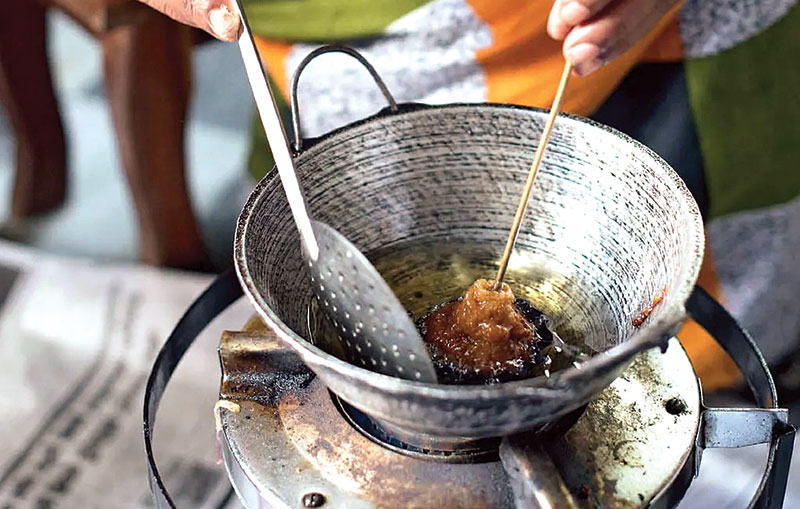
The avurudu table of any Lankan home is complete only when it is laden with kevum. Dating back to ancient times, many types of kevum are chronicled even in our classical texts. The Dutch rulers of the island are said to have relished them, some even asking if they grew on trees… A delicacy which was offered to visiting dignitaries, kevum was revered by our kings even in the battle field not only as an energy-booster but also as a wound disinfectant.
BY RANDIMA ATTYGALLE
The culmination of Avurudu preparations in my childhood with my grandparents was marked by the ritual of Kevum-making. Athamma would ‘book in advance’ the kevum specialist Soida Hami (Soida aachchi to us children), and install a special hearth in her back verendah for the grand moment. I would watch Soida aachchi in wonderment as her thick batter of rice flour and best of kithul treacle shaping into kevums in a hot wok of coconut oil. The long kevum koora in her nimble fingers would achieve the feat of the perfect konde. It was almost a rite of reverence, so much so I was not supposed to talk to her until the first batch of Konda-kevums was completed. Like many old-folk of her vintage, Soida aachchi believed that talking while the first few kevums are done would result in a flawed product.
She would then place each perfect Konda kevuma on a banana leaf for the excess oil to drain. Once the whole exercise was completed, she would place Konda-kevum in large earthen pots and store them in the dum messa or the storage area above the main hearth of the kitchen. She would spare me only one kevuma and the rest had to wait until the auspicious time on avurudu day!
Travellers’ records
Robert Knox an English sailor who was held in captive in the court of the Kandyan King Rajasinghe II and one of the prolific chroniclers of ancient Ceylon in his famous work, An Historical relation of the Island Ceylon documents on the sweet meats of Lankans with a special account of kevum.
‘They have several sorts of sweet-meats. One they call Caown. It is like to a fritter made of Rice-flower and Jaggory. They make them up in little lumps and lay them upon a leaf, and then press them with their thumbs and put them into a frying-pan and fry them in Coker-nut Oyl or Butter. When the Dutch came first to Columba, the King ordered these Caown to be made and sent to them as a royal treat. And they say, the Dutch did so admire them, that they asked if they grew not upon trees, supposing it past the Art of man to make such dainties.’ (Spelling as in the original Knox)
The account of Knox enables rich insights into this wonder of a sweet meat which enthralled many a traveller to the island including dignitaries. The European trader Cosmas who visited Ceylon in 545-550 AD, documents that along with gems, Kevum and Kalu dodol from Ceylon were taken to the Roman court of Emperor Claudius during the sixth century.
- Mun kevum
- Konda kevum
- Athirasa
Classical literature
Kevum dates back to ancient times and our classical texts such as the Ummagga jatakaya, Pujawaliya and Saddharma Ratanawaliya bear evidence to this fact. “Originally known as poopa this sweet meat came to be known as kevum in the Dambadeniya-Kurunegala era. Jathaka atuwa getapadaya mentions 18 kinds of sweet-meats found in the ancient Sri Lanka and among them are several types of kevum such as sendi kevum, mal kevum, athirasa, pena kevum, raa-kevum,” says Prof. Kusumalatha Lankamulla from the Department of Sinhala and Mass Communication at the University of Sri Jayewardenepura.
This scholar with research interest in Culture, Traditional and Modern Literature goes onto note that Mahawamsa in its 32nd chapter refers to two types of kevum in the context of alms offered by King Dutugemunu. The two types- thel kevum and maha de kuvum mentioned, were fried in ghee. “Many of our classical texts mention kevum in multiple festive contexts beyond avurudu. In Ummagga jathakaya, kevum is mentioned as a fitting gift to be taken when visiting parents. Saddharma Ratanawaliya refers to boxes of kevum or kevum pesa.“
An energy booster
Among the popular kevum types found today are Konda kevum, athirasa, mun-kevum, naran kevum and hendi-kevum. Although the ingredients used for each type may slightly differ, rice flour and treacle (now largely replaced with sugar) remain common to all. The much sought after Konda kevum which is relatively a later addition to the range of kevum found here at home is believed to have originated during the Kandyan period says Prof. Lankamulla. “During the Kandyan period, men were prohibited from cutting their hair off and they had to tie it in form of a knot on top of their heads. Konda kevuma is believed to have been inspired by this practice.”
Traditionally, Sinhalese soldiers were given a bag of kevum when going to war. History has it that King Dutugemunu went a step ahead and used kevum to treat wounded soldiers. His army used to prepare kevum months in advance and keep them exposed to air so that the mould can grow on them.
This mould in today’s language had ‘antibiotic properties’ and was used on the wounds of the soldiers to prevent them from festering. “In a bid to undermine the pride of place given to kevum as a super food by the locals, the British coined the famous derogatory adage: ‘Sinhalaya is a fool but is an ace at eating kevum’. (Sinhalaya modaya-kevum kanna yodaya)
Steeped in tradition
Superstitious beliefs surrounding the process of kevum-making are not uncommon and these vary from region to region in the island, says Prof. Lankamulla. Regardless of the region, several common traditions were followed by our ancestors and these still continue to be observed in several parts of the country, she says. “The frying pan with coconut oil to prepare the kevum was kept on fire at an auspicious time and village matriarchs who were highly skilled were mobilized for the occasion. Women also believed that they must refrain from talking when the first kevum is being made. For centuries, the first kevum was considered to be the ‘konduru kevum’, dedicated to the sledge-fly or the konduruwa. The village women would hang the first kevum up for the insects so that the rest would be unspoilt.”
With the passage of time, many Lankans, particularly city-dwellers depend on commercially available avurudu kevili including kevum. Although kevum is synonymous with avurudu, today people get to enjoy it round the year thanks to many sweet meat kiosks found in cities. Although these outlets have best sales during avurudu, they get plenty of orders from Lankans travelling abroad or coming home for vacation at other times of the year as well.
One such die-hard kevum fan is Uthpala Ranatunga from Ottawa, Canada. “My Loku amma (oldest aunt) makes it a point to pack me a parcel of best quality Konda kevum to take with me whenever I’m in Sri Lanka for a vacation.
I deep-freeze them for longer use and eat them sparingly,” says Uthpala to whom kevum is always a strong reminder of home. “Each time I indulge in them I feel nostalgic and miss home.”
Kevum is an integral part of the Lankan culture, finding its way from ancient classical literature to that of the contemporary including children’s literature and arts. The much-loved sweet meat is celebrated in the work of Sybil Wettasinghe – the iconic story teller and illustrator.
Come avurudu, we often hear the intonation of Lionel Ranwala, the eminent musician, vocalist and an authority on Sri Lankan folk music, whose tribute to the enduring legacy of this delicacy is one of the best in our times:
Me avurudu kale -sinaha weyan rale
Thel ihirunu kewum gediya wage…
Fashion
Festive glamour at Nethara

Nethara Collection ,is a world of export quality garments in Diulpitiya, Boralesgamuwa, is infused with an ultra festive spirit this season catering to the women of today. Unbelievable offers and discounts from Nethara for Sinhala anTamil new year. On selection of women’s clothing, ranges from casual options to formal occasion wear,all at friendly prices,to enhance your wardrobe this festive season.
Nethara collection, started small in 2017, but soon it outgrew, today with an ever increasing customer base, branded and non branded clothing this shopping centre has become very popular. Export quality , stylish dresses, crop tops, fancy blouses, trousers and many more to flaunt yourself and enhance your wardrobe.Their extensive collection, maintain low pricing allowing everybody to have a chance to shop till they drop dead. From casual wear to formal wear,they have women to men’s items like tee shirts, shirts for every occasion.
Nethara clothing has long remained a name that has struck a chord with Sri Lankan shoppers. “We believe our success has been based up on the premise that absolute sincerity towards customers and no matter what the economic situation that prevails, we try our level best to keep our prices low and within everybody’s budget, said managing director, Nethara Collection Sampath Kumara.
This April season Nethara collection brings an all new collection of export quality seasonal wear. Celebrate the season with exclusive offers made just for you! Dresses, blouses, casual, formal wear denim, men’s shirts and many more… world of limitless style and joy!
This festive season Nethara unwraps a celebration of warmth, style and sophistication. Immense yourself in a vibrant festive atmosphere as you explore thier collection under one roof 345 Boralasgamuwa With a focus on quality, affordability and customer satisfaction, Nethara export quality boutique invites you to celebrate the Sinhala and Tamil New Year in style.
(Zanita)
Life style
Sri Lanka tourism unveils strategic vision
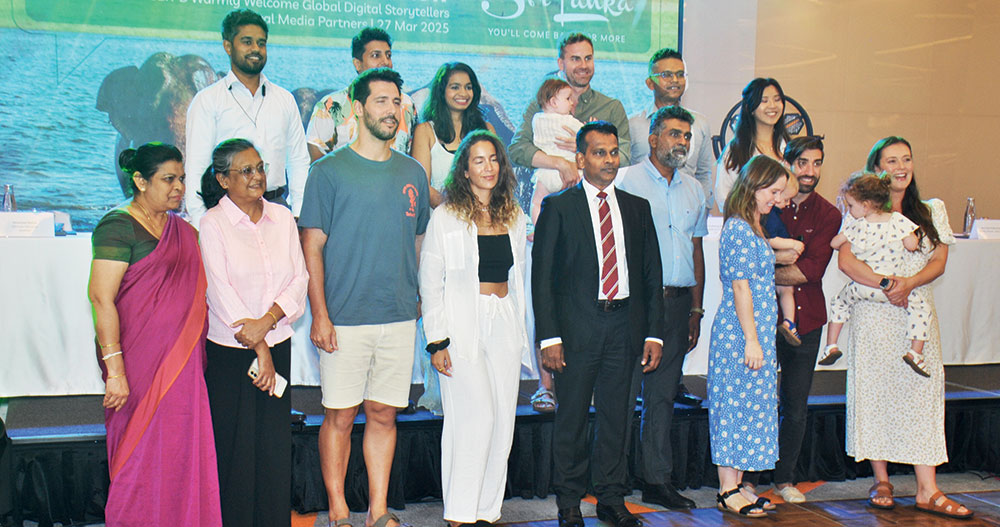
Sri Lanka Tourism Bureau hosted a landmark event at cinnamon Life for an ambitious campaign to spotlight Sri Lanka as a top travel destination. This initiative hosted international influencers and local media to capture the unique charm of Sri Lanka’s destinations. These travel influencers will share thier real time content across platforms like Instragrams Tik Tok and youtube amplifying Sr Lanka as a must visit destination. Many media personal, bloggers and influencers participated in this event which will take them on a tourism travel featuring some of Sri Lanka’s top destination.
Sri Lanka Tourism Promotion Bureau (SLTPB) hosted a landmark event at the Cinnamon Life Hotel, Colombo. The event was led by . Deputy Minister of Tourism, Prof. Ruwan Ranasinghe, with the participation of SLTPB Chairman Buddika Hewawasam, officials, travel influencers and their families, as well as journalists specializing in tourism sector reporting. The gathering set the stage for transformative initiatives aimed at bolstering Sri Lanka’s tourism sector and redefining its global image.
In his opening remarks, Buddika Hewawasam underscored the challenges facing the tourism sector, particularly the seasonal dip in arrivals during the summer months. “The next few years will be the most challenging period for all of us,” Hewawasam stated, emphasizing the need for international collaboration and strategic development. He further highlighted the critical role played by international travel influencers and media professionals in raising awareness of Sri Lanka’s hospitality and inspiring tourists worldwide to visit.
- Dileep Mudadeniya
- Deputy Minister of TourismProfess or Dr Ruwan Ranasinghe
- Guests
The Deputy Minister of Tourism, Prof. Ruwan Ranasinghe, detailed the innovative nature of the campaign and its importance in showcasing Sri Lanka’s rich heritage, natural beauty, and diverse travel experiences to mainstream and emerging tourism markets.
During the event, several prominent travel influencers shared their thoughts about Sri Lanka’s uniqueness as a destination. They highlighted that Sri Lanka is a country where travellers don’t need to worry about finding incredible experiences—nature has already done the hard work. The influencers remarked on Sri Lanka’s unparalleled diversity, noting that it is possible to experience a range of climates within just a few hours by travelling to different parts of the island. From sun-soaked beaches to misty highlands, and from lush forests to cultural treasures, Sri Lanka offers a world of adventures in a compact and accessible setting.
In comparison to destinations like Bali, which some influencers noted as overcrowded, Sri Lanka stands out with stable and balanced tourism activities. The event attendees were thrilled by the country’s warm hospitality, authentic DDirector cuisine with an impressive variety, long history, and rich culture. These qualities make Sri Lanka not only inviting but genuinely unforgettable for visitors.
The travel influencers in attendance expressed strong confidence in their ability to share this powerful message with the world. They were determined to shape international travel trends by showcasing Sri Lanka’s unique appeal, while also helping to attract new types of guests. The influencers represented a diverse range of travel segments, including family travellers, solo female travellers, honeymooners, and adventure seekers. Their efforts were supported by Sri Lanka Tourism officials and journalists representing both local and international media agencies.
The ‘Sri Lanka, A Story for Every Season’ campaign represents SLTPB’s first large-scale effort to boost summer travel through digital storytelling and influencer collaboration.
Featuring a curated destination familiarization tour, the campaign will spotlight wildlife safaris, cultural heritage, spiritual pilgrimage sites, scenic landscapes, and adventure tourism. Influencers will produce high-impact content for platforms like Instagram, YouTube, and Facebook, reaching over 2.2 million travel enthusiasts globally.
Sri Lanka Tourism shared impressive winter peak season results, with international arrivals reaching 665,295 by March 23, 2025—a marked increase compared to the previous year. These figures illustrate the sector’s potential for growth, and the campaign aims to sustain momentum throughout the summer months.
The event was a call to action for stakeholders to unite in elevating Sri Lanka’s global tourism appeal. With plans to generate over LKR 32 million worth of media coverage and connect with diverse travel segments, the campaign underscores Sri Lanka’s commitment to redefining itself as a leading destination for year-round travel.
By Zanita Careem
Pix by Darmasena Welipitiya
-

 Business1 day ago
Business1 day agoColombo Coffee wins coveted management awards
-

 Features2 days ago
Features2 days agoStarlink in the Global South
-

 Business3 days ago
Business3 days agoDaraz Sri Lanka ushers in the New Year with 4.4 Avurudu Wasi Pro Max – Sri Lanka’s biggest online Avurudu sale
-

 Business4 days ago
Business4 days agoStrengthening SDG integration into provincial planning and development process
-

 Business3 days ago
Business3 days agoNew SL Sovereign Bonds win foreign investor confidence
-

 Sports5 days ago
Sports5 days agoTo play or not to play is Richmond’s decision
-

 Features2 days ago
Features2 days agoModi’s Sri Lanka Sojourn
-

 Sports4 days ago
Sports4 days agoNew Zealand under 85kg rugby team set for historic tour of Sri Lanka

